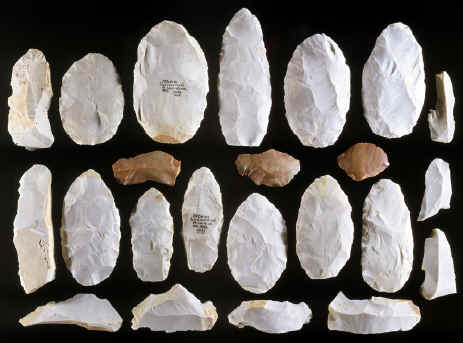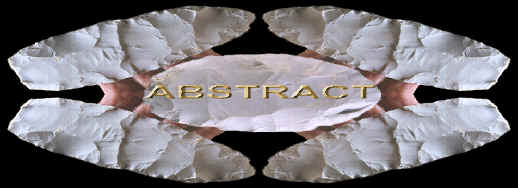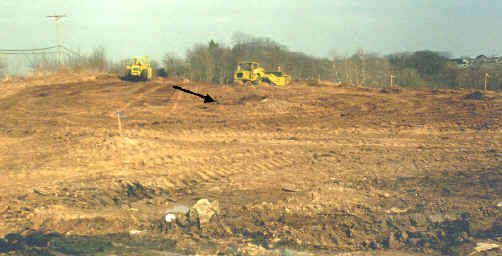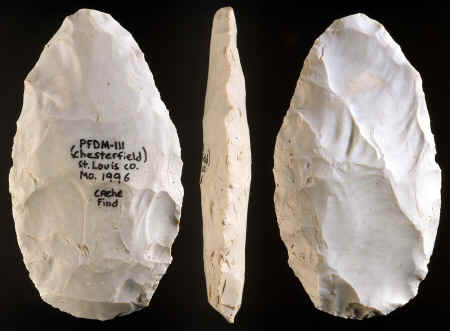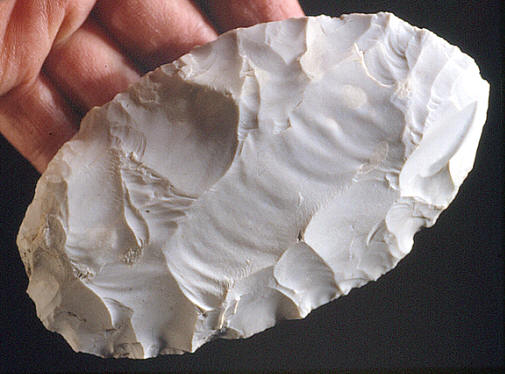|
|
||
|
||
|
"The term cache is applied to certain forms of storage of property, and in archaeology it is employed to designate more especially certain deposits of implements and other objects, mainly of stone and metal, the most noteworthy consisting of flaked flint blades and disks."---1912, Frederick Webb Hodge, "Handbook of American Indians North of Mexico," page 178.
This picture shows the land leveling operation that was taking place the morning after a cache of 12 core blades and 11 bifaces were found on this site by Donny McKinnis. The find location is indicated by the arrow. The site is situated on a high hill within two miles of the Missouri River in St. Louis County, Missouri.
The McKinnis cache is an important discovery for people who are interested in the study of Clovis stone tool making technology. The cache relates to Clovis tool making as evidenced by the large core blades and the very large percussion flakes or over-shot "outre passe" type of flaking that was used to shape the preforms. One good example of a late stage Clovis point preform is also included in this cache. |
||
|
The McKinnis Clovis cache was discovered during a land leveling operation in 1996 by Donnie McKinnis. The site is located in the town of Chesterfield in St. Louis, County, Missouri. The McKinnis site is situated on high ground and within two miles of the Missouri River. |
||
|
||
|
The McKinnis cache was discovered on the second day of a 4 or 5 day land leveling operation. Several houses have now been constructed on the site. Donnie McKinnis found the cache after a grader made a pass near where he was standing. The earth covering the top of the cache was removed, without damaging any of the artifacts. He reported that all the blades were on the top of the cache and the bifaces were situated underneath. His excavation was no more than 12 inches wide (30 cm) and 12 inches (30 cm) deep. He reported that one or two other people widened his initial excavation by approximately 4 feet (120.2 cm) without finding any more artifacts. |
||
| CONTINUE ON TO PAGE TWO | ||
|
"REFERENCES" 1912,
"Handbook Of American Indians North Of Mexico," pp. 178, 179. |
||
